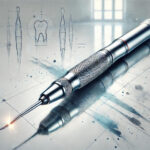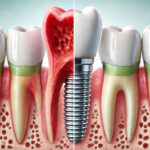Advancements in dental technology are continuously enhancing the quality of patient care. One such innovation is 3D imaging, which offers a detailed view of dental structures, enabling more precise diagnostics and treatment planning. This article delves into the benefits of 3D imaging in comprehensive dental assessments and its impact on modern dentistry.
Enhanced Diagnostic Accuracy
Traditional 2D X-rays provide limited information, often leading to incomplete diagnoses. In contrast, 3D imaging, such as Cone Beam Computed Tomography (CBCT), offers a comprehensive view of dental structures. This allows for more accurate identification of issues that might be missed with 2D imaging.
Key Diagnostic Benefits:
- Detailed Visualization: 3D imaging provides a clear, detailed view of teeth, bone structures, and soft tissues, aiding in the detection of conditions like fractures, cysts, and tumors.
- Early Detection: Subtle anomalies and early-stage diseases can be identified more accurately, allowing for timely intervention.
- Precise Measurements: 3D imaging offers precise measurements of anatomical structures, crucial for planning procedures such as implant placement.
Improved Treatment Planning
Accurate treatment planning is essential for successful dental procedures. 3D imaging enhances this aspect by providing a clear roadmap for various treatments.
Benefits in Treatment Planning:
- Implant Placement: With 3D imaging, dentists can assess bone density and structure, ensuring optimal implant positioning and reducing the risk of complications.
- Orthodontics: Detailed images of tooth alignment and jaw structure help in designing effective orthodontic treatments.
- Endodontics: 3D imaging aids in identifying root canal morphology and any hidden canals, ensuring thorough cleaning and filling during endodontic procedures.
Enhanced Patient Communication
Effective patient communication is a cornerstone of successful dental care. 3D imaging improves this by providing patients with a visual understanding of their dental issues and proposed treatments.
Communication Advantages:
- Visual Aids: 3D images serve as excellent visual aids, helping patients grasp the nature of their conditions and the necessity of treatments.
- Increased Trust: When patients can see detailed images of their dental issues, they are more likely to trust the diagnosis and treatment plan.
- Informed Decisions: Clear visual information empowers patients to make informed decisions about their dental care, leading to better compliance and satisfaction.
Enhanced Precision in Surgical Procedures
Surgical precision is critical in dental procedures, and 3D imaging plays a vital role in achieving this. By providing detailed anatomical views, 3D imaging guides surgeons during complex procedures.
Surgical Benefits:
- Guided Surgeries: 3D imaging enables the creation of surgical guides, which assist in precise drilling and placement during implant surgeries.
- Reduced Risk: Detailed anatomical insights help in avoiding critical structures, reducing the risk of nerve damage and other complications.
- Better Outcomes: Enhanced precision leads to improved surgical outcomes, faster recovery times, and higher patient satisfaction.
Cost and Time Efficiency
While the initial investment in 3D imaging technology may be significant, the long-term benefits in terms of cost and time efficiency are substantial.
Efficiency Gains:
- Fewer Appointments: Accurate diagnostics and treatment planning reduce the need for multiple consultations and revisions.
- Reduced Treatment Time: Precise planning and execution streamline procedures, reducing chair time and overall treatment duration.
- Cost Savings: Minimizing complications and improving treatment outcomes lead to cost savings for both patients and dental practices.
Embracing 3D Imaging for Superior Dental Care
The integration of 3D imaging into dental practices is revolutionizing comprehensive dental assessments. By offering enhanced diagnostic accuracy, improved treatment planning, better patient communication, and increased surgical precision, 3D imaging is setting new standards in dental care. As technology continues to evolve, the adoption of 3D imaging will undoubtedly become more widespread, further enhancing the quality of dental treatments and patient outcomes.










